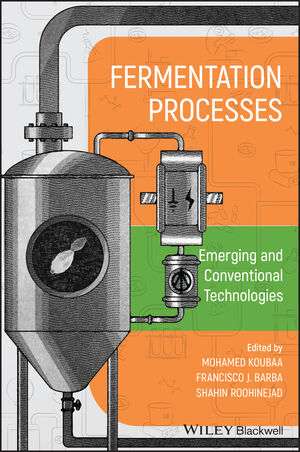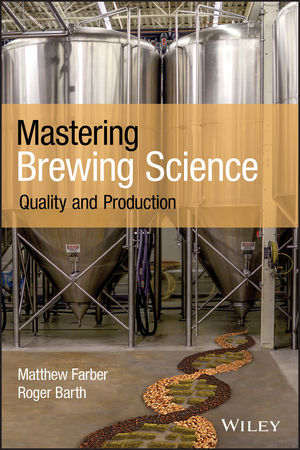Operations: Advancements make lab testing easier

Beverage laboratory and testing equipment improvements, particularly accuracy and testing online, are further advancing processing this year. The necessary tests conducted for product traits are standard, but lab equipment manufacturers are making equipment that is not standard.
Each beverage has its own specific content of carbon dioxide (CO2) from which taste and flavor are optimally developed. Steinfurth Inc., Marietta, Ga., developed a laboratory carbonation system that produces beverage samples with individual CO2 content. The LCS 710 P carbonates individual beverage samples with precisely predefined CO2 content. The unit makes it possible to reproduce samples easily and quickly for analysis, the company says.
The versatility of different carbonation settings helps to develop beverage samples for sensoric testing to ensure that customers receive optimally created products, the company says. Other benefits of the machine include simple adjustment for different bottle sizes, fully automatic menu-driven input of bottle size and CO2 value, repeatability of results, automatic head space purging with CO2 gas, reduced foaming of the beverage samples and optimized automatic cleaning program.
Steinfurth also developed the CPA-3 Compact Package Analyzer, a modular quality control system for the lab and filling line to test CO2 concentration, opening torque, fill level and Brix. By means of a barcode reader, the CPA automatically selects the appropriate spec limits, measuring procedures, calculation formulas and collects in one central database all results delivered by the single instrument components.
“What is happening at the moment in the beverage industry is that everybody is trying to work on quality, which costs money, but not really offering a direct return on investment,” says Johann Angres, president of Steinfurth. “Money is something where very often, especially large companies, are trying to safeguard. On the other side, you have the trend that the laboratories are focusing on measurements or tests that are a little bit more critical and advanced, and simple measurements like CO2 testing and torque measurement very often are outsourced to the bottling line directly. So in this case, folks can save time in moving beverage samples from the bottling line to the laboratory. They can have a little quicker reaction and can see what happened directly at the line and getting a little better feeling about the products that they produce.”
Expanded options
Known for supplying refractometers to the beverage industry, Bellingham + Stanley is now offering other laboratory and testing equipment to the industry. In March 2010, ITT Corp., White Plains, N.Y., acquired Bellingham + Stanley through its acquisition of Nova Analytics opening its portfolio of products.
One of its instruments, Bellingham + Stanley’s RFM340+ refractometer, has undergone improvements to the thermodynamic control system offering increased measurement performance between 0 to 20 degrees Brix. This reduces the potential for measurement error in finished products such as sodas, fruit juice, beer, wine and cider, the company says.
“The improved accuracy will allow for tighter control of finished products, ensuring better yields during the dilution phase of manufacturing and greater profits for manufacturers,” says Kevin Chapman, Bellingham + Stanley’s marketing manager.
In addition, SG scales for sucrose are now standard on Bellingham + Stanley’s refractometer series and the use of these within a simple methods system allows readings to be declared as if they were measured on a density meter.
“Refractometers are considered by many to be easier to use than density meters, especially by non-skilled operators in production areas,” Chapman says. “By providing this feature, contract packers now have the option to use refractometers even where a density Brix is specified.”
Regardless of how accurate a refractometer is, if the user doesn’t regularly verify its calibration, the results obtained cannot be relied upon. Bellingham + Stanley supply a range of UKAS Certified low Brix reference materials that are not only traceable to the National Institute of Standards and Technology but also have a 12-month shelf-life. This makes them ideal for verifying refractometers that control final Brix of finished carbonated beverages and fruit juices.
“As one of the key requirements of beverage manufacturers is longevity of the instrumentation they use, it is paramount for them to make sure that their equipment is properly looked after,” Chapman says. “This makes regular verification highly important.”
Earlier this year, Bellingham + Stanley released the in-tek IR Series of infrared beverage analyzers for Brix, carbon dioxide, alcohol and organic acids. Comprising no moving parts, the sensors are installed directly to the beverage processing line to provide significant savings when compared with pump-driven by-pass installations both in terms of initial cost and routine maintenance, the company says. Clean in place (CIP) methods also can be performed without the need for special considerations to the sensor, while single and multiple parameter sensors are available, it says.
Extending flexibility
Measuring different parameters in soft drink analysis such as carbon dioxide, oxygen, density or specific gravity are capabilities that can sometimes require individual pieces of equipment. Anton Paar USA Inc., Ashland, Va., produces measuring and laboratory instruments that have the capabilities to measure multiple parameters simultaneously.
The company has incorporated several advancements as well as product line extensions into their existing portfolio. The company’s PBA-S Generation M Packaged Beverage Analyzer for Soft Drinks is an up-to-date measuring system for beverage analysis. It determines the Brix and CO2 in soft drinks in a single work step without prior sample de-gassing. The beverage is filled in the analysis system directly from its container and is then measured within three minutes, the company says. Anton Paar also offers similar systems to measure key parameters in beer, wine and spirits.
The PBA-S Generation M modular system consists of a DMA 4100/4500/5000 M density meter, CarboQC ME CO2 measuring module and PFD filling device.
“There are many important benefits that these systems bring to customers,” says Wallace Harvey, national sales manger of laboratory products for Anton Paar. “No. 1 is the flexibility to have a modular system like this test for multiple parameters. It really saves a lot of time, so instead of having to measure on one particular piece of equipment and then move to another instrument, they can measure several key parameters all at once.”
Harvey says the most recent products enable the measurement of new parameters such as turbidity, or haze, in beverages. The modular systems also are beneficial because of their high accuracy and ability to measure beverages in the actual package that the finished product will be available in, Harvey says.
“That’s a great benefit to the customer because it tells them a lot more information about how the product is actually going to perform and the taste that the final beverage is going to have, and all those qualities are going to be maintained as they expect them to be,” he says. “That’s a key benefit for the customer to analyze product in the finished package form.”
Anton Paar also updated its PBA-SI Generation M Packaged Beverage Analyzer for Soft Drinks with Inversion. This up-to-date measuring system for beverage analysis determines Brix, CO2 and degree of inversion in soft drinks without prior sample de-gassing. The beverage is filled into the analysis system directly from its container and is then measured within five minutes. Brix, CO2 and degree of inversion are determined in a single work step.
The PBA-SI Generation M modular system consists of the Soft Drink Analyzer density and sound velocity meter, CarboQC ME CO2 measuring module and PFD filling device. By simultaneously measuring both density and sound velocity, the Brix before the start of the inversion, after full inversion and the current degree of sugar inversion are determined automatically.
“One of the key things that’s important is the ability to really watch costs to ensure an efficient manufacturing process,” Harvey says. “We allow the customer to do that by being able to closely monitor multiple parameters in a very fast fashion so they can get their results. That enables them to make almost instantaneous adjustments to their process so they don’t waste raw materials and ingredients.”
New standards
For beverage formulators that are looking to invest in laboratory-scale high temperature (HTST) and ultra heat treatment (UHT) processors, MicroThermics Inc., Raleigh, N.C., has instituted new standards for its 2011 models.
MicroThermics will roll out new 2011 processors that will be able to increase research efficiency, decrease time to market, save research time and money, and have easy operation, it says. Processes that can be conducted include HTST, hot-fill, UHT (high or low acid), aseptic (high or low acid) and microwave assisted extractions.
All processors will now have sanitary design as a standard feature. MicroThermics offers multiple sizes to accommodate high velocity and high viscosity product lines for all of its processors, the company says. The models also use robotic, orbital welding and tri-clamp style fittings, as well as optional cGMP executive for high purity and pharmaceutical production applications.
The company says some of the benefits of the sanitary design are as follows: faster and easier process changes, no tools required for process changes, faster and easier sensor replacement, easier clean-in-place features, fully inspectable product connections and less wear on parts.
Many of MicroThermics’ 2011 model processors also will include touch-screen PLC control and data acquisition as a standard feature. These touch screens will provide an easy-to-use control screen, sensor calibrations, overall flow diagram display, strip-chart and large instrument displays, the company says. MicroThermics says these displays will enable users to gain a full understanding of the reactions occurring in the process in real-time.
In addition to processors, MicroThermics’ products also include homogenizers, micro-scale plate-in-frame heat exchangers, steam generators, water chillers, CIP cleaners and more. The equipment is designed to process a range of products including milk, juices, concentrate, teas and more. BI
Looking for a reprint of this article?
From high-res PDFs to custom plaques, order your copy today!






